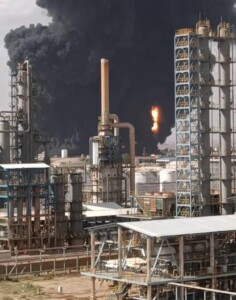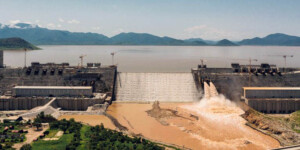Rains, flash floods kill 13 in Sudan
Heavy rainfall across Sudan last week caused the death of about 13 people, as well as extensive material loss.
In Karary district in Omdurman, four people including two children were killed on Thursday when the rooves of their houses collapsed.
South of Omdurman, 40 homes collapsed entirely, and more than 140 partially as a result of the torrents. A woman died under her collapsed roof.
Also in El Laota village in El Gezira State, a woman and her daughter were killed when their house fell down.
Heavy rainfall across Sudan last week caused the death of about 13 people, as well as extensive material loss.
In Karary district in Omdurman, four people including two children were killed on Thursday when the rooves of their houses collapsed.
South of Omdurman, 40 homes collapsed entirely, and more than 140 partially as a result of the torrents. A woman died under her collapsed roof.
Also in El Laota village in El Gezira State, a woman and her daughter were killed when their house fell down.
In Khartoum, a number of wards at the Ibrahim Malik Teaching Hospital were flooded.
Flash floods
In Mershing locality in South Darfur, Jamila Adam Mohamed and her 13-year-old daughter were killed by flash floods on Thursday.
On Thursday afternoon, five residents of the Abu Shouk camp for the displaced, northeast of El Fasher, capital of North Darfur, including two children, were killed by floods that came from the Jadid El Seil valley. The water also washed away a number of water engines at the camp.
On Friday morning, floodwaters from Jebel Marra destroyed two bridges on the El Fasher-Nyala road in Tawila locality in North Darfur About 200 water engines were swept away from the sides of Tawila valley.
Floods swept through Naivasha camp near Shangil Tobaya for the third time in a row, raising the number of homes destroyed to 2,200. Many other shelters and latrines were partially damaged.
Increased risk of flooding
Although the 2015-2016 El Nino has dissipated, the Famine Early Warning Systems Network (FEWS Net) has identified a 55-70 percent chance of the La Niña climatic phenomenon occurring in Sudan by the end of 2016, with increased risk of flooding across the country.
Flooding in Sudan normally occurs from June to October. According to the World Food Programme (WFP) and Food and Agriculture Organization (FAO) El Niño Seasonal Calendar, flooding in parts of East Africa including Sudan may occur from July to November this year.
The UN Office for the Coordination of Humanitarian Affairs (OCHA) in Sudan reported in its latest weekly bulletin that flash floods and heavy rains in June have already damaged and destroyed over 2,500 houses in Sennar State, reportedly affecting almost 15,000 people so far, and the Civil Defence and the Sudanese Red Crescent Society have provided an initial response to affected people.











 and then
and then